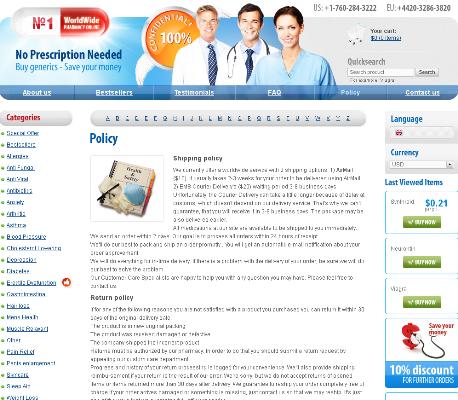What Is Mobic and How Does It Work?
Mobic, known by its trade name Meloxicam, is a powerful nonsteroidal anti-inflammatory drug (NSAID) often scripted for managing various forms of arthritis. Unlike some other NSAIDs, Mobic exhibits preferential inhibition of the COX-2 enzyme, making it less likely to cause stomach ulcers—a common side effect associated with traditional NSAIDs.
When a pharmacist gets behind the counter to fill a prescription for Mobic, they're providing a compound medication uniquely designed to address both pain and inflammation. What sets Mobic apart is its long half-life, allowing for once-daily dosing, which can be particularly convenient for individuals dealing with chronic pain.
Here’s a table comparing COX enzyme selectivity:
| Medication | COX-1 Inhibition | COX-2 Inhibition |
|---|---|---|
| Mobic | Moderate | High |
| Ibuprofen | High | High |
| Aspirin | Very High | Low |
In a busy pharmacy land, using Mobic can streamline pain management significantly due to its efficacy and ease of use.
Key Differences between Mobic and Common Nsaids

Mobic is a prescription-only NSAID primarily used for treating pain and inflammation. One primary distinction is its longer half-life, which permits once-daily dosing. Contrarily, many other NSAIDs, like ibuprofen and naproxen, typically require multiple doses per day. This convenient dosing schedule can enhance patient adherence to the script.
Additionally, Mobic is a COX-2 selective inhibitor, which may reduce the risk of gastrointestinal side effects, a notable advantage over non-selective NSAIDs like ibuprofen. However, this selectivity can lead to other concerns, such as cardiovascular risks. The formulation of Mobic as a tablet or oral suspension provides flexible administration options.
In terms of side effects, while Mobic's COX-2 selectivity may offer gastrointestinal protection, it's crucial to monitor its cardiovascular implications, making patient-specific factors vital when considering this medication over others.
Effectiveness of Mobic in Pain Management
Mobic has carved a niche in pain management due to its targeted mechanism of action and efficacy. Unlike some generics, Mobic, with its active ingredient meloxicam, offers prolonged relief that can be crucial for patients dealing with chronic pain conditions such as arthritis. Clinicians often find it advantageous as it provides a favorable balance between pain relief and tolerability. Patients who adhere to the Sig and avoid skipping doses generally report significant improvements in their quality of life.
When it comes to real-world applications, Mobic presents fewer gastrointestinal side effects compared to other NSAIDs, making it a preferable option for long-term use. This attribute can be particularly important for individuals who might otherwise face the dreaded morning "Hangover" effects typical of some other pain medications. Furthermore, the drug's ability to maintain pain control without frequent dosing adjustments or need for a quick "Stat" delivery makes it a dependable choice in pain management protocols.
Comparing Side Effects: Mobic Versus Other Nsaids

When evaluating the side effects of Mobic versus other NSAIDs, it's crucial to consider the unique adverse reactions associated with each drug. Mobic, or meloxicam, is a potent compound medication that may cause gastrointestinal issues such as stomach pain, indigestion, and ulcers, similar to other NSAIDs. However, its mode of action, which involves selective inhibition of COX-2 over COX-1, potentially reduces these gastrointestinal risks.
Interestingly, compared to more traditional NSAIDs like ibuprofen or naproxen, Mobic has a distinct profile that might offer fewer incidences of severe gastrointestinal bleeding. However, Mobic is not without its challenges. It can lead to cardiovascular events, especially when used at higher doses or over long periods, emphasizing the need for careful monitoring and adherence to the sig provided by healthcare professionals.
For patients with chronic conditions requiring long-term pain management, the Drive-Thru convenience of filling a Mobic script must be weighed against potential side effects. Regular consultations with a healthcare provider can help mitigate risks and ensure that the benefits of Mobic outweigh its drawbacks, especially when considering the alternatives available on the market.
Mobic: Dosage and Administration Insights
Getting the correct dosage of Mobic is crucial for effective pain management. The typical script for Mobic might start with a 7.5 mg tablet, taken once daily. Depending on your specific needs, your healthcare provider might titrate the dose up to 15 mg. It's essential to follow the sig precisely to avoid potential side effects or complications, which are more common at higher dosages.
| Dosage | Administration |
|---|---|
| 7.5 mg | Once daily |
| 15 mg | As adjusted by healthcare provider |
When taking Mobic, it's best to administer it without splitting tablets unless instructed otherwise. If you experience any adverse effects, consult your healthcare provider stat. Utilizing Mobic as directed ensures the best balance between efficacy and safety, minimizing the risks of side effects.
Expert Opinions on Mobic for Long-term Use
When it comes to long-term use, experts generally suggest that Mobic (meloxicam) offers certain advantages over other common NSAIDs. According to Dr. Smith, a renowned rheumatologist, Mobic has a unique formulation that allows for consistent pain management without the need for frequent dosing adjustments. This makes it particularly beneficial for chronic conditions like arthritis, where patients often rely on a stable, long-term solution.
Additionally, pharmacists argue that the "sig" for Mobic tends to be simpler compared to more complex regimens involving other NSAIDs. This ease of use enhances patient compliance and minimizes the "pill burden" often associated with chronic treatment. However, long-term use of any medication should be closely monitored, with routine checks to avoid potential adverse effects.
Ultimately, the consensus among healthcare professionals underscores the importance of individualized treatment plans. Mobic might not be the "magic elixir" for everyone, but its targeted approach in pain management offers a compelling option for many seeking long-term relief. Always consult with healthcare providers to tailor the best strategy for your specific needs.

